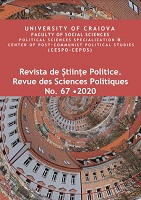Visual Teaching – Using Digitalised Material to Engage ESP Students
Visual Teaching – Using Digitalised Material to Engage ESP Students
Author(s): Costina Denisa BărbuceanuSubject(s): ICT Information and Communications Technologies, Distance learning / e-learning
Published by: Editura Universitaria Craiova
Keywords: visual literacy; Prezi presentations; visual input; mnemonic; engage;
Summary/Abstract: Since the beginning of our civilization human beings have communicated through visuals, either written on the cave walls or inside pyramids, visuals that formed a body of language with the help of graphic symbols and representations up to sophisticated digitalised Prezi presentations, today. The first examples of graphic symbols or infographics appeared 30,000 BC, in the Stone Age, when the first humans painted the cave walls with animals in order to communicate with one another; the Egyptians also used hieroglyphs, 3,000 BC, to tell story of their kings and queens, inside the pyramids; in 1510, Leonardo da Vinci combined written tuition with illustrations to produce an inclusive guide on human anatomy. In 1786, the Scottish engineer William Playfair initiated data visualisation through the use of graphs and charts and printed illustrations. Moreover, “Plants have been portrayed in print since the introduction of printing press in the 15th century. From early Renaissance herbals, through pictures of Baroque gardens, to increasingly naturalistic depictions of plants and flowers in the 17th and 18th centuries, printed illustrations of natural history had become fairly common and accepted.” (Playfair, 2005). In the mid 30’s, Otto Neurath developed a model of visual communication to clarify notions through the use of icons and pictures called isotype. Additionally, “In the Far East we see one language for writing, but a great number of languages for talking. We have made one international picture language (as a helping language) into which statements may be put from all the normal languages of the earth. We have given it the name ISOTYPE.” (Neurath, 1936). The brain is intended to pursue things that are diverse, so for it to be agile and function competently, its memory requires some empty space to maintain an ideal processing haste, thus the brain filters received data but discards 99% of all sensory data almost instantly after observing it,- depending on whether the received info is diverse from what the brain is familiarised seeing. Information that is different or uncommon appeals to the brain, that is why Prezi presentations today deliver a chance of novelty or distinctiveness.
Journal: Revista de Științe Politice. Revue des Sciences Politiques
- Issue Year: 2020
- Issue No: 67
- Page Range: 36-44
- Page Count: 9
- Language: English

